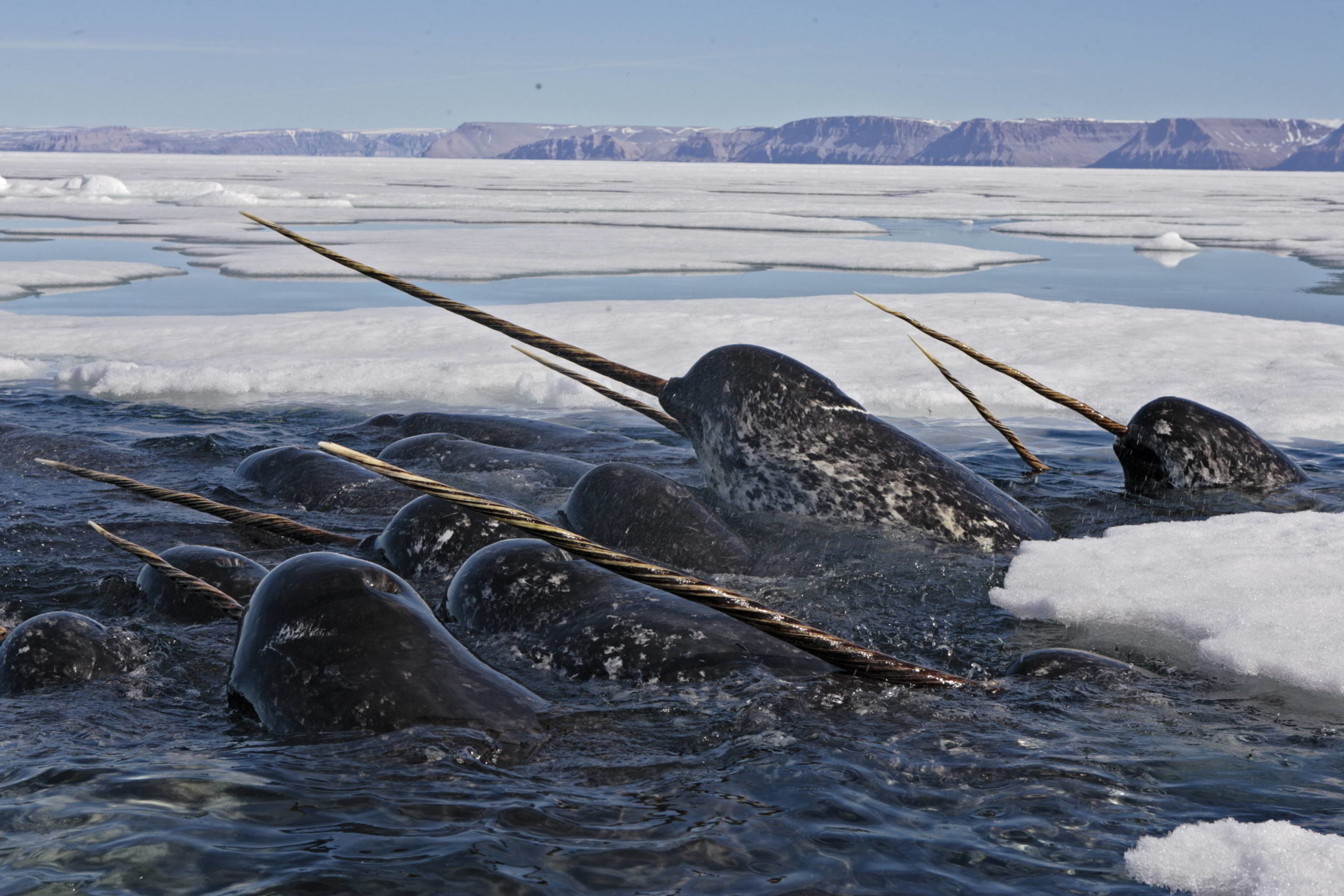Inuit speak out against expansion of Arctic iron mine, community concerned over wildlife impacts
A public hearing has been taking place in Iqaluit and Pond Inlet over a proposal to more than double production from Baffinland’s Mary River iron ore mine in eastern Nunavut, increasing output from six million tonnes a year to 12 million tonnes. Without strong environmental safeguards, this expansion will have long-term negative consequences for local wildlife like narwhal and caribou as well as Inuit communities.
Paul Okalik, WWF-Canada’s lead Arctic specialist, is participating in the hearings as an official intervenor and echoing community concerns by calling for strict measures to reduce disturbance to wildlife from the construction of a railway and dramatically increased shipping traffic.
© Paul Nicklen_National Geographic Stock / WWF-Canada
Community members are also speaking out
In a video specially produced for these hearings, community members are asking for these wildlife impacts to be reduced and explaining how their lives are being affected.
“The animals that we live on and use for food such as seals, fish, polar bears and caribous, hares, ptarmigans as well as the birds that migrate up here in the summer, all of them, we want them always to be healthy,” said Jaykolasie Killiktee, former mayor of Pond Inlet. ”Because we depend on them.”
“We reported our concerns regarding the narwhals in Milne Inlet and the caribou,” he added. “The Mittimatalik HTO have expressed their concern that the caribou might be disrupted by the railway. They think that many caribous will be hit by the train once the railway is up and running.”
Here’s what else you need to know:
What is Baffinland’s Mary River mine?
Located on the northern tip of Baffin Island — the shipping traffic goes right through Tallurutiup Imanga, one of Canada’s newest and largest National Marine Conservation Areas — this mining project was already the biggest development in the history of the Canadian Arctic before proposing this massive expansion.
New railway – the first in the Canadian Arctic – could threaten caribou population recovery
New infrastructure, like a dedicated railway to transport ore from the mine site to the shipping port, has the potential to severely disrupt the migration and health of the north Baffin caribou herd. This herd has already experienced massive declines and we are concerned that early signs of recovery after years of hard work and sacrifice by Inuit would be jeopardized by this new development. Industrial development and disruption in calving grounds — which are along the proposed railway line — is a significant threat to population recovery.
Proposed shipping routes concerningly overlap with preferred narwhal habitat
Once the ore is put on vessels transiting through Milne Inlet and Eclipse Sound, the risks from oil spills, underwater noise, and pollution affect wildlife which feed and migrate through the area. Currently there are 198 vessel transits per season, but with the increase in production, ships will be navigating these sensitive waters 384 times per season.
Research supported through our Arctic Species Conservation Fund has identified these marine areas as preferred habitat for narwhal. In summer months, 90 percent of the world’s narwhal population migrates to these and other Canadian waters, making local disturbances a global concern for this at-risk species.
Impacts to food supply and threat of oil spills worry local Inuit
Harvesting seals, narwhal, and fish sustain families and are a way of life in the region. Development disturbances — or worse, an oil spill — could devastate north Baffin Inuit communities, especially Pond Inlet which is called Mittimatalik in Inuktitut.
Reducing local impacts for narwhal and people is possible
Despite the threats, there are very tangible steps that the Baffinland Iron Mines Corporation can take, as well as mandatory conditions that the Nunavut Impact Review Board can put in place to reduce risks to wildlife and people.
In some instances, slowing the production schedule down would allow the company to better consult with communities and incorporate Inuit Qaujimajatuqangit (Inuit knowledge) to understand areas of cultural or environmental concern that must be avoided. Slowing down would also facilitate the scientific studies needed to ensure negative impacts on the Baffin caribou herd are avoided.
On other issues, like oil spills and underwater noise, new practices and technologies must be put in place to mitigate marine impacts. Specifically, WWF-Canada is asking Baffinland to: reduce ship transits; eliminate waste dumping from vessels; transition to cleaner ship fuels to avoid spill risks; suspend shipping when many narwhal are present or when they are nursing or calving; and never ship through sea ice.
One specific example of recommended changes is switching from Heavy Fuel Oil to a cleaner fuel source, which among other things could reduce the amount of black carbon emissions up to 80 per cent. Black carbon, or soot, is worsening Arctic sea-ice melt, compounding climate change and threatening ice-dependent species and communities.
These public hearings run until February 6. The Nunavut Impact Review Board will then render a decision on the more than doubling of mine output and inform the federal minister of Northern Affairs, who has final say on the future of Baffinland’s proposal.


